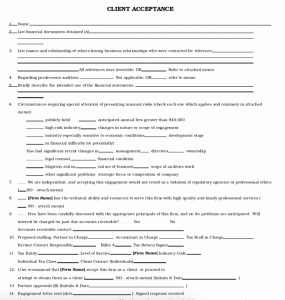Think you’re too busy or non-techie to adopt online marketing as a local small business? Contributor Chris Marentis suggests you build on a foundation of content marketing and use the technologies now at your fingertips.

Who would have predicted that small businesses would need to become online marketing savvy to grow? As recently as 10 years ago, you could get the word out about your business quickly using ads on television and radio, posting flyers, or having a listing in the yellow pages. There weren’t that many other choices.
Some of those options are still acceptable for reaching a local market, but we’ve entered the information age, where content is king — as long as you get it shared everywhere that your local audience is looking.
And where do they look now? On their cell phones. In Google. In online discussion groups. They’re looking for answers to problems as well as recent and relevant customer reviews.
By now we all know that we need great content to be the foundation of our marketing efforts — content that’s suitable for all channels, from search to social. You need to talk about your story and solving your customer’s needs, or you won’t show up on prospective customers’ radar at all. And when I say “talk about” that doesn’t just mean audio or text — your communications could also take the form of visuals or infographics or videos of various lengths.
No one wants to hear a dry presentation about how great your product is, but everyone wants to know how to solve their problems.
So where does content come from? The easiest path is to talk about:
- What you know,
- What your business does,
- What’s happening in your industry,
- Internal and external customer stories,
- News and trends.
How To Make The Experience Exceptional For Your Customers
If you want today’s consumers to consume your content, you’ve got to make it about them. While you need to consider the message you’re trying to get across, you need to put it in terms that speak to their needs. What does every customer or client of every business want to know? How to ease their pain.
If you want to get customers to be invested in what your company offers, ease their pain in an area that’s related. There’s a magic intersection where what they’re interested in, and what you produce, overlaps. For example, if you’re a roofer, you could create content that tells homeowners about the relative costs of different materials and approaches — so they can make the right decisions and fit roof repair into their budget.
If you build swimming pools, you can post photos of a proud customer’s finished backyard on your blog, on Instagram or Pinterest. For more ideas, check out Facebook groups and online discussion boards related to what your business does — you’ll quickly identify pain points that you can address with your content. Additionally, check out the search function on your site — are there things people are searching for that they’re not finding?
For local businesses, content isn’t the problem — there are content possibilities everywhere if you know where to look.
Make Content Irresistible To Your Customers
You might be thinking “hey, I knew that.” What you might not realize is that content that’s interesting to you as the owner of the business might not be what your customers want to read.
You don’t want your content to leave readers thinking, “That was kind of neat.” You want to blow them away. You want them to subscribe out of love for your content or fear that they might miss something critically important. You want people leaving your website thinking that they’ll need to purchase your product and services now, or they might miss out on a great deal.
There are five top attributes common to creating high-quality content. The best content is:
- Creative – how can you be more imaginative or original about the way you share?
- Visual – about 65% of the population learns best from visuals.
- Educational – we humans are hard-wired to appreciate learning new things.
- Conversational – most people subvocalize when they read. And it sounds better to them if your words sound like a conversation rather than a lecture or a brochure excerpt.
- Call to action – Tell your prospects what they should do next.
So if you can find a topic to cover, and create something your audience would actually want, where do businesses run into trouble with content marketing?
Most commonly, the problem comes when you’re trying to figure out how to get what you’ve created into the publications your customer reads, into the searches they’re making on the Web, or shared by the experts they trust in social.
This Is Where Technology Comes In
How do you use marketing technology to reach your customers?
Creating and publishing content can be a complex process. Technology can help you streamline your workflow for efficiency. Look for technology solutions that will give you the ability to publish across platforms and offer you the results all in one place.
Possible content distribution ideas that can be helped by technology include:
- Publishing newsletters and blog posts,
- Sharing photos, charts, graphics and infographics, and
- Creating video how tos for YouTube, Facebook, Instagram and Vine that feature creative ways other customers use your products.
Additionally, you can use analytics software like Google Analytics to measure things like repeat visits, site engagement time and conversions from visitors to sign-up pages. Analyzing those metrics can help you figure out what your customers like about your site, and how to make it better. When you distribute links to your content on social media or elsewhere, use manual tagging so your analytics software may determine what pieces of content and what distribution methods are driving traffic.
You can also use software to help you keep your site properly structured, as well as add the necessary schema markup to help you get found in critical mobile and local searches.
When it comes to social sharing, you can use various tools to identify which well-respected opinion leaders would be the most likely to share your content.
Just 10 years ago, most small and local business owners wouldn’t dare to dream of having such an abundance of growth-enabling data and technology at their fingertips. In the past few years, the adoption of cloud solutions has made things even easier — we can make this data and software available to every employee in our business who needs it at any time of day.
Use this power wisely to make the most efficient use of your limited time. Use data to tailor your content marketing efforts to meet your customers’ needs, leverage technology to effectively distribute your content, and employ analytics to determine what’s working and which efforts deserve a larger investment of time and resources.
Some opinions expressed in this article may be those of a guest author and not necessarily Marketing Land. Staff authors are listed here.
(Some images used under license from Shutterstock.com.)
Marketing Land – Internet Marketing News, Strategies & Tips
(221)







